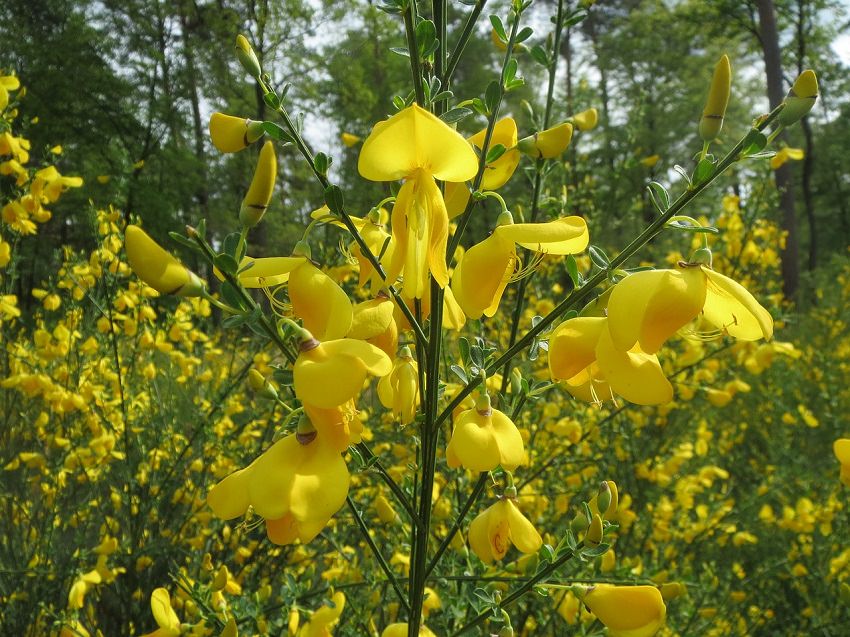Disclosure: As an Amazon Associate I earn from qualifying purchases. This page may contain affiliate links, which means I may receive a commission if you click a link and purchase something that I have recommended. There is no additional cost to you whatsoever.
It’s a terrible irony that the gardens we plant to make our personal environments more beautiful often damage the natural world outside our fences. By now we all understand the harm caused by pesticides and the over-use of chemical fertilizers. But fewer people are familiar with the dangers posed by many of the plants we choose to grow in our gardens. Just like exotic pets that can wreak havoc when released in the wild, many plant species can escape the boundaries of our gardens to damage natural ecosystems.
Invasive Species
There’s a lot of confusion about the differences among garden plants, weeds, native plants, naturalized plants, and invasive species because these terms are partially subjective. A garden plant is any plant a person chooses to place in their garden. It may be a horticultural variety that has been bred for specific characteristics, but just as often it’s a species found in nature. Those plants may be naturally occurring (native) in the area where they are planted. Or they may be exotic (native to a different ecosystem). A weed is any plant, regardless of its origin, growing in a place where it is not desired.
But the term “invasive species” does have an objective meaning separate from how gardeners feel about the plant. An invasive species is one that, when introduced into a new environment, spreads so aggressively that it harms the function of the ecosystem into which it has been introduced (often after completely taking over the garden).

Naturalization
Most horticultural varieties and exotic garden plants are adapted for different temperature and rainfall patterns than what exists where they are planted. So they rely on gardeners to provide the conditions they need. Plants that can survive without care may spread within the garden or even find a niche outside the garden in the new environment. These plants are said to be naturalized. They did not evolve in the environment but have adapted to it without significantly disrupting it.
But sometimes the new climate suits a plant. Whatever predator or limiting factor kept it in check in its native environment is missing, allowing it to spread out of control. It displaces native plants, disrupting existing food systems, and even creating vast monocultures. These plants are invasive. All invasive plants are naturalized. However, not all naturalized plants are invasive.
A weed doesn’t have to be ugly to be dangerous. Lakes filled with purple loosestrife and fields of Scotch broom look beautiful. But they are devoid of the biodiversity they should be hosting. People are the primary vectors spreading invasive species. This can be unintentional. But most invasive plants are purposely introduced through cultivation. Many of the same traits that make them desirable in the garden (like being hard to kill) make them dangerous to the environment.
What’s the Harm?
The damage caused by invasive species is much greater than just creating more work for you weeding the garden. The real, measurable harm includes displacing native plants that wildlife depends on for food; choking waterways and altering hydrology or soil chemistry so that native plant communities can no longer thrive; and creating vast monocultures that eliminate habitats and reduce biodiversity. One study found that invasive species are second only to habitat loss in endangering native plant species, with 57% of endangered species affected by invasives.

Know Your Enemy
Most of the plants you need to beware of will vary depending on where you live. Every invasive plant where you live is native somewhere else. And there may be other locations where it is exotic but well-behaved. So it’s important to learn about the species that are local problems to your bioregion. Start by familiarizing yourself with the federal and your state’s noxious weed lists. Your county extension office may provide a more granular list and detailed information about the local impacts of invasive species.
Join the Resistance
Some state noxious weed designations ban the sale of listed plants. But there is rarely any enforcement, and many noxious weed lists are simply advisory. That means you are likely to encounter known invasive species at the garden store. In fact, many of the worst offenders are still quite popular garden plants. Resist the urge to buy something invasive just because it is pretty. The book Native Alternatives to Invasive Plants is a good resource for finding native plants that will fill the same role in your garden as popular invasives.
Not only can native plants provide direct replacements for harmful exotics, but studies have found that “increased native biodiversity confers resistance to invasion.” That means that the more native plants we have in an area, the less likely that area is to become invaded, even if you are also planting non-native species in your garden.
Feature image of Kudzu by Fumi Yana, CC BY-SA 4.0, via Wikimedia Commons
<!–
You Might Also Like…
–>







